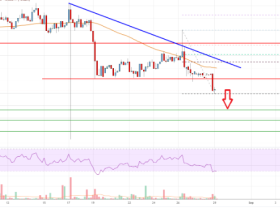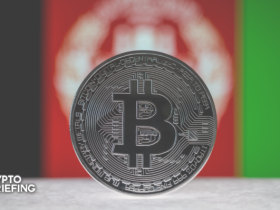Tokens for bitcoin exchanges have existed for some time now. This idea started when exchanges tried to make more money available, and the solution was to make a native token. Holders of the tokens gain additional benefits, such as reduced trading fees.
Despite the crypto market as a whole stagnating in 2019, the bulk of exchange tokens experienced significant increases for a few months continuously.
Cryptocurrency exchange tokens, their general usage, and the industry’s all-time most popular exchange tokens will all be covered here, as will the basics of how they work and how they’ve changed in price and price movement.
Introducing Tokens on a Cryptocurrency Exchange
There are a number of different types of crypto exchanges that allow people to purchase and trade cryptocurrencies. It is because of their role in the crypto field that they are considered an important stakeholder and contribute to the ever-growing blockchain community.
To be competitive, cryptocurrency exchanges need to have a user-friendly interface, just like other online brokerages and traditional financial markets need of their users. Another factor is the wide range of cryptocurrencies available for purchase. It’s worth noting that exchanges have had to alter their platforms and trading choices to meet the needs of their customers as the blockchain sector has progressed.
Crypto Exchange Tokens are digital assets that are specific to a specific crypto exchange. Here, we’ll go over the three most common use cases for these tokens, and how both exchanges as well as their customers profit from them.
Tokens issued by cryptocurrency exchanges are used for a variety of purposes.
- A Greater Degree of Liquidity
Cryptocurrency market prices are influenced greatly by liquidity, which refers to the ability of assets to be easily exchanged. The availability of trading operations on the financial market is another name for this concept. It’s easier for the market to function when there is more available liquidity, so to speak. Assets having a higher level of liquidity can be traded more freely without significantly impacting their price. Slippage is a term used in the cryptosphere to describe this phenomena.
Crypto exchanges employ their native token to reward users for every trade they make on their platform, resulting in additional trading activity and liquidity for the crypto market. One way to do this is to give each user a percentage of the native tokens based on their trading volume. You can also start a stake program as an additional option.
2. Multi-Party Confidence
It can be used to build trust among exchange users and market authorities, depending on the sort of cryptocurrency the exchange offers. Stablecoins pegged to the US dollar, for example, combine the price stability and creditworthiness of the US dollar with the protections provided by regulatory agencies in the US and the technological advantages of cryptocurrency.
3. Discounted Fees
To facilitate their orders, crypto exchanges, including decentralized ones managed by communities, do charge a small fee to any user placing an order.
But in order to encourage trading and build customer loyalty, exchanges give discounts on fees for customers who use their native tokens. If you have a lot of the native tokens in your account wallet, certain exchanges will give you discounts based on how many tokens you have in your wallet. Regardless of whether the exchange is centralized or decentralized, both systems provide users with incentives to interact with the ecosystem’s native coin.
4. Initiating, Enforcing, and
You should be aware that not everything exchange native tokens are intended to benefit users. It is common for decentralized exchanges to design their native tokens as a kind of governance for their future development. The holders of these tokens are granted some special advantages and voting powers.
If you are a decentralized exchange and you have a use case like this, you are likely to see governance-token tokens, which are more frequent on decentralized exchanges.
Tokens for the Cryptocurrency Exchange
Token exchanges can benefit both users and the exchange, although not all well-known exchanges have their own native token. For some, it’s a non-starter since it’s out of step with their users’ expectations or strategic priorities.
In the following sections, you’ll learn about some of the more popular crypto-exchange tokens and how to get your hands on them.
- Binance Coin (BNB)
BNB, the native token of Binance, the world’s largest crypto exchange by trading volume, has received a significant boost. In addition, of all the cryptocurrency exchange tokens, BNB is by far the most widely used.
According to Changpeng Zhao (CZ), chief executive officer of Binance, the exchange wants to promote Binance Coin with a wide range of applications. The Binance Coin’s primary use case and function is to reduce trading fees on the Binance exchange. As a result, Binance currency owners and other platform customers who want to pay their trading costs in Binance coin can benefit from a variety of discounts.
In addition, the token is the only way for people to engage in Binance Launchpad’s fundraising events. As long as there aren’t any exclusions, users who want to participate in initial exchange offers (IEOs) hosted on this platform will have to utilize BNB to purchase the tokens being sold.
On Binance Launchpad in 2020, there were a lot of successful token sales including Fetch.Ai, Celer Network, and BitTorrent whose demand for BNB skyrocketed. Another program Binance began that year was lottery drawings, which allows users to enter upcoming IEOs on the launchpads for free.
Binance Launchpad’s recent IEOs
Cartesi, WazirX, Sandbox, Band protocol, Celer Network, and Kava are among the most successful initial exchange offerings that have been hosted on the Binance Launchpad in recent times. Polygon (MATIC) Network was also one of the most successful offerings.
2. The Huobi Token (HT) (HT)
Huobi is one of the most popular exchanges in terms of trading volume when compared to other exchanges. According to CoinMarketCap, Huobi’s daily trading volume is around $3 billion at the time of this article. Since its inception in 2013, the crypto exchange has built a reputation for itself as a reliable one throughout the world. Prior to China’s eventual ban on digital assets, the exchange was said to be the main platform for trading cryptocurrencies in the country at the time of its establishment. As a result, a number of venture capitalists have invested in the platform, including Sequoia Capital.
As far back as 2020, Huobi said that it would be creating a stablecoin named HUSD alongside its native cryptocurrency, the Huobi Token (HUT).
There are a number of intriguing applications for the Huobi Token (HT), including the lowering of trading fees for Huobi platform users and holders, similar to the Binance Coin (BNB). As an OTC trader on Huobi, you must deposit Huobi tokens as a type of security in order to be recognized. In addition, only Huobi token holders are allowed to vote on which tokens and coins are added to the Huobi platform.
Huobi has also announced the launch of Huobi Prime, a blockchain initiative comparable to Binance Launchpad. On the other hand, in contrast to the Binance launchpad, the Huobi Prime required potential investors to have held no less than 500 HT on average for the previous 30 days before the beginning of the fundraising event. This was a prerequisite for participation in the platform’s services. The goal of this move is to make it more profitable for Huobi token holders to keep their holdings.
3. The Price of KuCoin Tokens (KCS)
There is little doubt that KuCoin became a household name in 2018 because it included smaller, less-known cryptocurrencies. Since then, no exchange has been ready to take a chance on those initiatives, but KuCoin took the risk and was rewarded for it.
According to CoinMarketCap data, KuCoin has a daily trading volume of $2 billion.
Later, the native cryptocurrency of KuCoin called KuCoin Shares (KCS) was developed, which, as the name implies, incorporates asset allocation. Those who own the KCS token receive 50% of the daily trading fees that the exchange collects. You may think of it as a way to reward the exchange’s most loyal customers with a dividend.
Additionally, KuCoin has jumped on the IEO bandwagon with the launch of KuCoin Spotlight, a blockchain project launching platform similar to Binance and Huobi. MultiVAC is the first project to be completed on the platform.
4. okex.coin (OKEX) (OKB)
OKEx (another prominent crypto trading platform) has created its own native cryptocurrency, the OKB, following in the footsteps of others. The OK Blockchain Foundation has created a utility token for its members. There were no public fundraising activities or Initial Coin Offerings (ICOs) for this currency, which is unusual.
In order to be ERC-20-compliant, the OKEx token was designed. As of now, OKEx has stated that the token would be transferred to its public blockchain, which is currently being developed.
The OKEx exchange also introduced a token sharing scheme for the OKB token, which distributes free of charge around 60% of the total OKB token supply to users. Additionally, the OKB token helps the ecosystem run more efficiently by removing transaction barriers for all parties involved.
In addition, investors have 500,000 OKB tokens in escrow to support listing candidates and get to examine them on the exchange, which might be considered a wonderful useability of the token.
Just like Binance and Huobi, which have already been discussed in this book, OKEx is also getting ready to launch its own crowdfunding platform for a new blockchain platform it’s calling OKEx Jumpstart, where the first project to be supported is BlockCloud.
5. Infinite Box Token (BIX)
Because of its focus on the Asian market, Bibox might be regarded a market leader in the crypto exchange space, even though it does not have the trade volume to be included in the top 10. In 2018, when the exchange first started offering some of the popular tokens aimed at the Asian market, it began to acquire traction in the cryptocurrency community. The DAI stablecoin market was bolstered significantly by the exchange.
MORE ARTICLES
KYC plans for crypto funds have been scrapped by the Treasury of the United Kingdom.
Babel Finance has agreed to a debt deal
For the first time since 2020, Bitcoin falls below $20,000
Along with the majority of other crypto trading platforms, the Bibox Token (BIX) native coin is available on the site. Users will save money on
6. BitMax Token (BTMX)
It’s possible that you haven’t heard of BitMax, although the daily token trading volume is $56 million, and it is rated 47th in terms of trading volume among crypto exchanges.
BitMax Token (BTMX) is the name of the BitMax exchange’s native token, which has a ticker symbol of BTMX. As stated in the project’s whitepaper, the token will have no meaning in relation to ownership, participation, interest, or any kind of exchange right. Holders are also not entitled to any revenue, dividends, profits, fees or return on investments as stated in the document.
In light of this, the BitMax token’s primary function is to act as a means of payment and exchange between BitMax users and other participants in the ecosystem.
7. Symbol of the COSS
Singapore-based exchange COSS has a native token, COSS Token. The primary goal of the exchange is to bring together all of the trading functions into a single platform. At roughly $10 million a day in 2020, the daily trading volume of the exchange began to garner attention in the crypto world.
Token holders will receive a portion of the platform’s trading fees in the form of the COSS token, an exchange token. Another prevalent trend is to employ tokens to provide consumers discounts on fees for every trade. COSS followed this concept as well.
How to Obtain Tokens on the Crypto Exchange
A type of ICO, the Initial Exchange Offering (IEO) is the primary method of distributing new exchange tokens to their members (IEO). Users can get the token at the lowest feasible price before demand increases and the price rises with this method of acquisition.
Aside from Initial Exchange Offerings, certain additional crypto exchanges can issue their tokens through airdrops, initially or on an as-needed basis. In an airdrop, tokens are sent to users’ wallets for free or in exchange for basic promotional chores by the project’s creators. It is possible to trade and swap any tokens acquired through IEOs or airdrop channels if the token or project has an established market with liquidity. There are some exchange tokens, however, which do not work with external wallets, so users should do their due diligence on each token before deciding whether or not to utilize it. Incompatible wallets can result in the loss of assets when transferring tokens.
trading costs because of the token’s diverse set of potential applications. As a bonus, the token provides 20 percent dividends based on the entire net profit of Bibox.com.
A crowdfunding platform for blockchain projects called Bibox Orbit was just launched by Bibox exchange, which is included in this tutorial.
Conclusion
Although this article has gone into great detail to clarify the concept of crypto exchange tokens, it is recommended that you DYOR – Do Your Own Research – before participating. In addition, this article is merely educational content and does not provide any financial advice whatsoever. You are solely responsible for any financial decisions you make as a result of this guide.











 Bitcoin
Bitcoin  Ethereum
Ethereum  Tether
Tether  Solana
Solana  XRP
XRP  Dogecoin
Dogecoin  USDC
USDC  Cardano
Cardano  Lido Staked Ether
Lido Staked Ether  TRON
TRON  Avalanche
Avalanche  Toncoin
Toncoin  Shiba Inu
Shiba Inu  Stellar
Stellar  Wrapped stETH
Wrapped stETH  Wrapped Bitcoin
Wrapped Bitcoin  Polkadot
Polkadot  Chainlink
Chainlink  Bitcoin Cash
Bitcoin Cash  WETH
WETH  Sui
Sui  Pepe
Pepe  LEO Token
LEO Token  NEAR Protocol
NEAR Protocol  Litecoin
Litecoin  Aptos
Aptos  Uniswap
Uniswap  Wrapped eETH
Wrapped eETH  Hedera
Hedera  Cronos
Cronos  Internet Computer
Internet Computer  USDS
USDS  POL (ex-MATIC)
POL (ex-MATIC)  Ethereum Classic
Ethereum Classic  Render
Render  Bittensor
Bittensor  Ethena USDe
Ethena USDe  Artificial Superintelligence Alliance
Artificial Superintelligence Alliance  Bonk
Bonk  WhiteBIT Coin
WhiteBIT Coin  Arbitrum
Arbitrum  Dai
Dai  MANTRA
MANTRA  Filecoin
Filecoin  dogwifhat
dogwifhat  Cosmos Hub
Cosmos Hub  Stacks
Stacks 
Leave a Reply